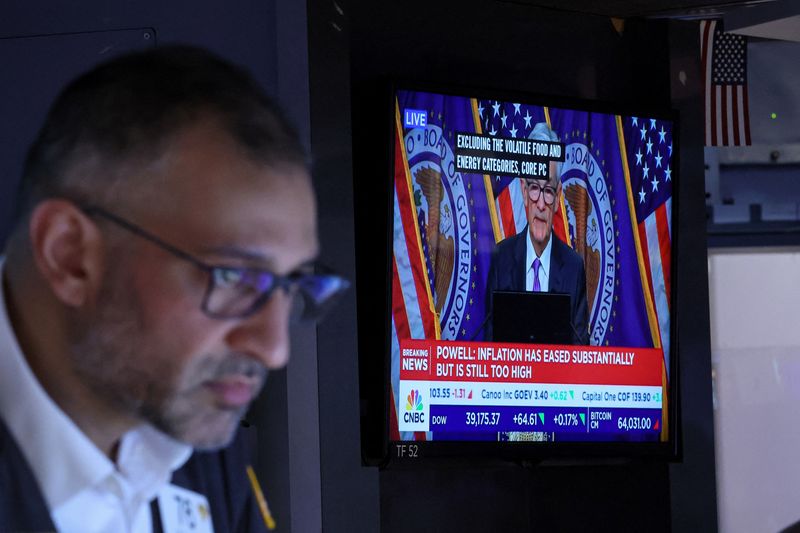By Davide Barbuscia
NEW YORK (Reuters) - A recent jump in a key U.S. overnight funding rate could be the result of a peculiarity in the way it is calculated, rather than a signal of low liquidity, said Deutsche Bank.
The Secured Overnight Financing Rate (SOFR), a measure of the cost of borrowing cash overnight collateralized by Treasury securities, jumped to 5.38% on Monday, its highest since the end of July, New York Federal Reserve data released on Tuesday showed. The rate remained at the same level on Tuesday.
The rate is a key measure of the borrowing costs on loans between banks and other participants in the U.S. repurchase agreement (repo) market. A spike in repos can indicate that cash is getting scarce in a key funding market for Wall Street.
But this time around the increase could have been driven by "a quirk in SOFR's calculation methodology," Deutsche Bank said in a note on Tuesday, as an analysis of the data compounding the SOFR rate reveals little evidence of the funding pressures seen in 2019, when short-term funding costs spiked, forcing the Federal Reserve to inject liquidity into repo markets.
"The increase in SOFR yesterday did not lead to broader funding market pressure and likely has no implications for reserve conditions or quantitative tightening," the Deutsche Bank analysts said. Quantitative tightening is the Federal Reserve's program to reduce the size of its balance sheet.
SOFR is calculated by the New York Fed as the volume-weighted median rate of transactions in three markets for repos. The calculation excludes lower rates from transactions of so-called "specials" that are cleared through the Fixed Income Clearing Corporation's Delivery-versus-Payment (DVP) repo service.
Special repos are securities that have high demand, prompting potential buyers to offer cheap cash in exchange.
DVP repo transactions with rates below the 25th volume-weighted percentile rate are removed from the distribution of repo data.
"Consequently, where this 25th percentile rate falls matters, and it could have a disproportional impact on the actual SOFR fixing," said the analysts at Deutsche.
In their note, the analysts propose a scenario where the shift of one out of 100 hypothetical repo transactions to a slightly higher rate, which happens to be the 25th percentile rate, causes a larger portion of the sample of transactions to be excluded in the final calculation of SOFR.

"This small change leads to a significant jump in the new calculated median rate," they said.
In July, the New York Fed requested public comments to proposed changes to the SOFR calculation methodology, which are set to be implemented early next year. The changes would reduce the impact of rate distribution on the final SOFR calculation.